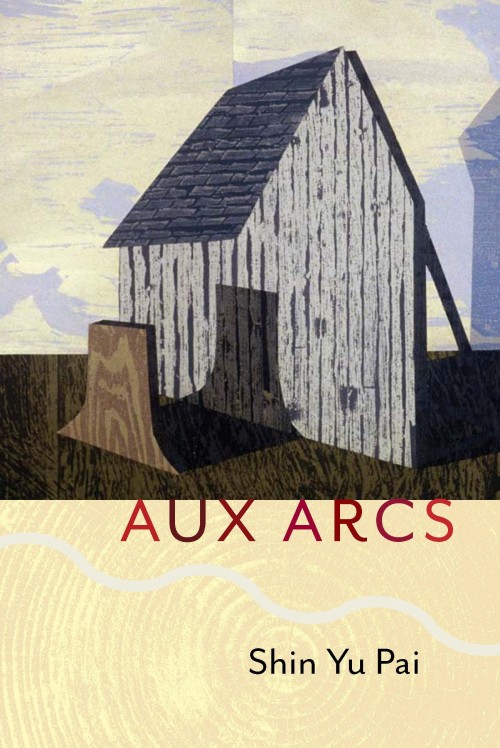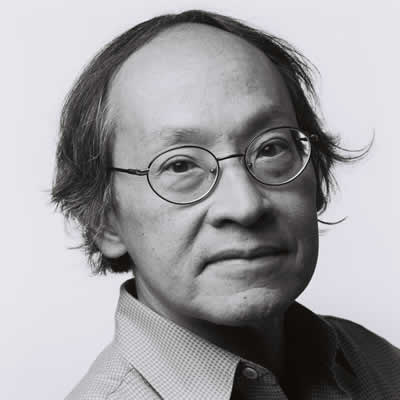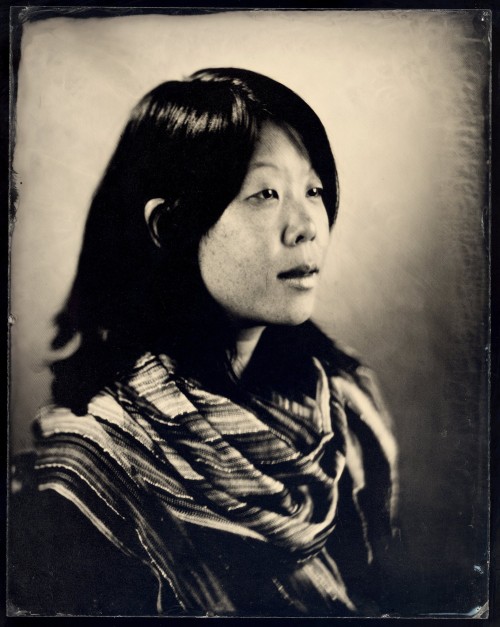Seattle Author Spotlight (6) — Shin Yu Pai
This is the 6th Seattle Author Spotlight (previous ones were Richard Chiem, Maged Zaher, Deborah Woodard and Matthew Simmons) and I plan on running quite a few more because AWP’s coming and Seattle has plenty of talented and interesting writers.
Shin Yu Pai:
Shin Yu Pai is an ambitious, bright and engaging poet, photographer and C.O.O. of the National Asian Pacific Center on Aging: “the nation’s leading advocacy and service organization committed to the dignity, well-being, and quality of life of Asian Americans and Pacific Islanders (AAPIs) as they age.” Shin Yu’s most recent book, Aux Arcs, has just released from La Alameda Press and is rooted, for the most part, in her experience, and situation, of being in a small town near Little Rock, Arkansas.
I thoroughly enjoying chatting with Shin Yu at Elliott Bay books (this is where I’ve met and spoken, thus far, to all featured Seattle Authors). We spoke some about the form and content of Aux Arcs and this branched us off into other chatting about assimilation, the way different people treat each other, etc. There were other things I’d planned on talking about but the time kind of flew by. And that’s always a good sign. Shin Yu has a kind of spark, presence and good sharp energy that just makes you want to be around her.
Brief Bio:
Shin Yu Pai is the author of several poetry collections including Adamantine (White Pine, 2010), Sightings (1913 Press, 2007) and Equivalence (La Alameda, 2003). She has been a writer-in-residence for the Seattle Art Museum and has received grants for her work from 4Culture and the City of Seattle. For more information, visit her website
Brief Interview:
Rauan: you’ve lived as an adult (and a writer) in Seattle, Texas and Arkansas (among other places)– can you tell us a bit about the differences in living in these places and how these cities impacted yr thinking (and therefore yr writing)?
Shin Yu: I moved to Dallas shortly after completing my studies in a museum-school-based writing program, and transitioned into a job where I was very involved in the visual arts and museum world. In my early writing, I was very interested in the intersections between poetry and contemporary art-making practice. Dallas was not like living in other parts of Texas, which I would experience years later when moving to San Marcos, Tex., to work as a curator. San Marcos had a much more provincial and Southern feel to it. My neighbor in my apartment complex proudly hung his Confederate flag, for instance. Both San Marcos and Arkansas influenced my writing and thinking in bringing in a deeper engagement with issues related to race, gender, and power in my work. Seattle has also had its influence on my work – living in a community where there is a greater visibility of professional Asian Americans and Asian-American artists and writers has afforded me with the privilege of having to think less at times about my ethnic identity. In being able to relax into that space, I have been able to open up to new directions and interests in my writing to engage more deeply with social issues and current events.
RK: your writing has a rich but pared-down feel to it, in tone and in form (reminiscent of a William Carlos Williams or a Lorine Niedecker). what poets (or other writers) were models for you ? (early on as well as more recently)
SYP: Arthur Sze’s work has been important to me. Frank O’Hara, John Yau, and Mei-mei Berssenbrugge have engaged my thinking about poetry and the visual arts. Though they are not models for my own work, I am also interested in the way that poets like Hoa Nguyen, Christine Deavel, and Jonathan Skinner use language.
RK: can you please provide us short sample of your work to give our readers a taste of your work?
SYP:
From “Working Dog, Do Not Pet”
the cattle dog
has no intimates
her duty is
to guard
to reach a hand
beyond the electric
safety fence might be
to have it bitten off,
or to tempt some greater
peril, to bring back before
the canine intelligence
a trace of her basic
nature, that each living
being is bred for more
RK: Do you have an Ars Poetica and if so how has this changed over the course of your writing career?
My poem “Equivalent” which appears in Equivalence was an early ars poetica. The poem explores the work of photographer/installation artist Felix Gonzales-Torres, alongside the work of Alfred Stieglitz – a gallerist/photographer/publisher. FGT made these sweet edible candy portraits of loved ones and Stieglitz produced a photographic series of sky images that for him epitomized the living experience of the sky. I have thought for a long time about how poems can go beyond approximation and replication – to transformation and/or genesis of a lived experience.
from Equivalent
What you touch,
take
with you
a piece of hard green candy
gathered from a spill
on the gallery floor,
portrait of a friend
the qualities he gave those
he loved
transposed into sweet pile,
please keep
with you
this sweetness,
passing
RK: What contemporary writers (poetry or fiction or non-fiction, even) do you admire and read most often?
SYP: I admire the work of poets such as Heather Nagami, Sherwin Bitsui, and Kaia Sand. In terms of fiction writers, Ben Fountain and Benjamin Alire Saenz (I love his poetry too) are favorites. Non-fiction writers whose work I turn back to again and again: Charles D’Ambrosio, Marjane Satrapi, and David B.
RK: To give our readers a 2nd taste of your work can you please give us a second sample of your work?
SYP:
Blackface
in Pretoria, the High Court rules Chinese South Africans are to
be reclassed as blacks, having suffered under years of apartheid
rule that identified Asians as mixed-race; aligned with the most
poor they can now qualify for affirmative action under Black
Economic Empowerment codes, citizens erect their own busi-
nesses, own shares in other outfits & receive empowerment trans-
actions under legislative conventions the Chinese are one step
nearer to being made less invisible; a new precedent set their civic
identity a legal loophole handed down through tribunal decree
RK: Also being a photographer can you talk a bit how this visual art complements or works against your poetry?
SYP: My visual work complements my writing in being another extension of the way in which I see and take in the world. I see them as very complementary vs. oppositional practices that help me to go to deeper places that I might not, if aided by only one medium. The photography operates at times on a subsconscious/intuitive level that is pre-verbal – the “first thought, best thought” doesn’t always come to me in the form of a fully formed thought or language, but arrives sometimes through an image which can then telescope more deeply into language.
RK: for readers of this blog unfamiliar with your work what would you say to them about your new book “AUX ARCS”?
SYP: AUX ARCS continues some of the themes that have engaged my thinking from the beginning of my writing career – from the visual arts and identities to the transformation of experience. It’s a book about place and the desire to expand beyond geographic boundaries. Seeing and experiencing the world as an outsider while conscious of uncovering the points of connection that make us belong to a place and vice versa. The book is a reflection of my time living in the South, but not a black-and-white commentary upon it. The collection is as much about the notion of a detour, as it is about overture or opportunity, an invitation to look more closely at place and our position in relationship to it. Although the work is written in free verse, formal qualities also permeate the composition of individual works, whether poems or photographs. It is a book with multiple points of entry and connection and thematic arcs that reverberate throughout.
Tags: Seattle Author Spotlight, Shin Yu Pai




